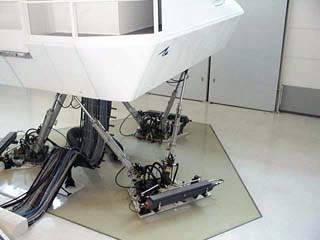
This is what a standard full motion flight simulator motion
base looks like. The polygonal outline you see is actually not part
of the existing floor. Because of the motion and vibration of the
simulator, the motion base must be supported independantly from the rest
of the building to prevent damage. The base the simulator is bolted
to is a 40' thick concrete pad that extends through the first floor of
the building (the simulators are on the 2nd) and through the main building
foundation. This may seem a bit extreme, but considering the inertia
moving a 27,000lb simulator can accquire, you can see the necessity.
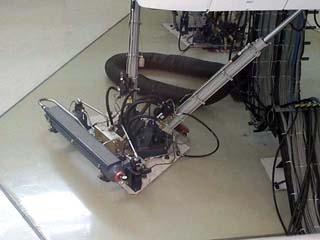
This is a detailed image of one of the three motion base
mounting points.
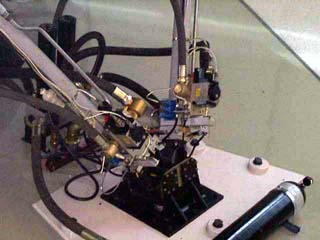
This is a closeup of one of the mouting points.
You can see some of the feedback mechanism enclosures here.
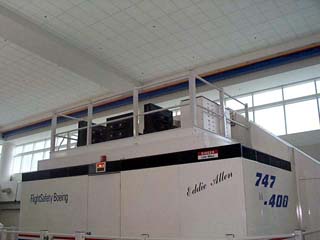
This is the rear of the 747-400 full motion simulator.
The name "Eddie Allen" was one of the early Boeing test pilots. Before
the advent of the 777, each simulator was named after a person that had
a profound effect on Boeing. For the 777 on, the logo "Working Together"
has replaced this tradition.
To give you an idea of how large this simulator cab is,
the middle entry door is less than three feet wide.
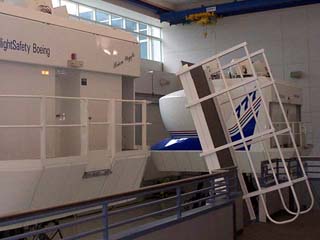
The 777 simulator in the background carries a visual
system that spans greater than 160 degrees of forward view. With
the advent of newer video systems, they're able to do this without any
visible seams in the image. Pretty impressive. The simulator in the
foreground is currently being "flown". The catwalk to the right will
electrically lower when it's commanded to do so by pressing a switch inside
the cab.